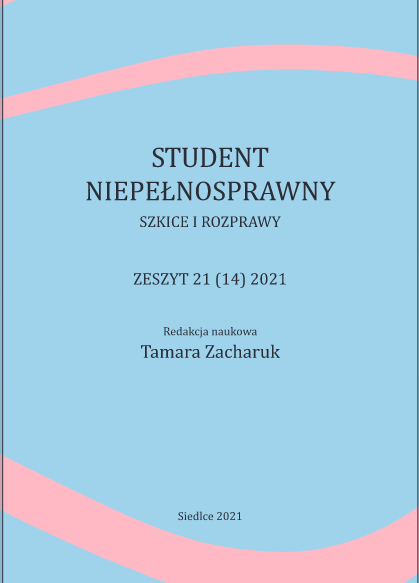Universal design of space in kindergarten as a response to the specific needs of children
DOI:
https://doi.org/10.34739/sn.2021.21.03Keywords:
universal design, space arrangement in kindergarten, accessibility, preschool child, special needsAbstract
Universal design of space in a kindergarten should be aimed at creating full accessibility of public space that will meet the expectations of all children, regardless of age, health condition or limitations of mobility or perception. The universal availability of space determines the proper development of an individual. In order to improve the safety and limit the social exclusion of children, including children with special educational needs, one should strive to shape an environment based on the principles of universal design. The article presents the assumptions for the design and arrangement of a child's space in a kindergarten taking into account its needs, and discusses issues related to the elimination of spatial barriers that increase safety and independence in the child's personal development.
Downloads
References
[w:] M. Nowak, E. Stoch, B. Borowska (red.), Z problematyki teatrologii i pedagogiki,
Wyd. KUL, Lublin.
Konwencja ONZ o prawach osób niepełnosprawnych (Dz. U. 2012 poz. 1169).
Nowacka Ł. (2008), Kształtowanie przestrzeni z punktu widzenia zróżnicowanego
odbiorcy – antropometria jako narzędzie w projektowaniu, „Studia i Materiały Centrum
Edukacji Przyrodniczo-Leśnej”, R. 10, z. 2 (17).
Ustawa z dnia 19 lipca 2019 r. o zapewnianiu dostępności osobom ze szczególnymi
potrzebami (Dz. U. z 2019 r. poz. 1696).
Wieruszewska-Duraj S. (2015), Technika doświadczeń poszukujących w nabywaniu
i kreowaniu wiedzy ekologicznej przez dzieci 5-letnie, Pracownia Wydawnicza Wydziału
Humanistycznego UPH w Siedlcach, Siedlce.
Wysocki M. (2012), Przestrzeń dostępna – wyzwania społeczne i projektowe, „Czasopismo
Techniczne”, t. 1-A/2, z. 1.




